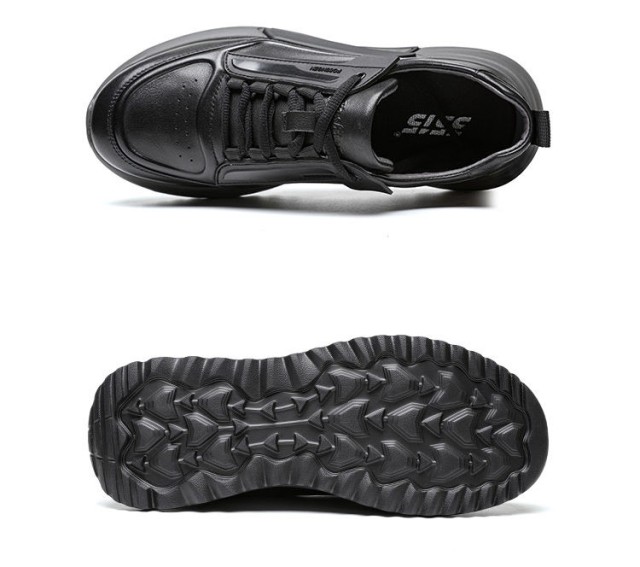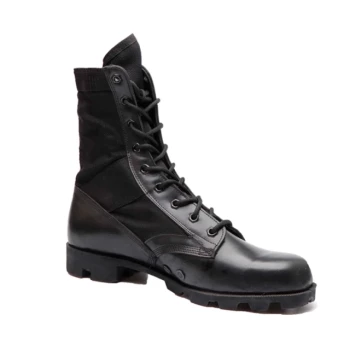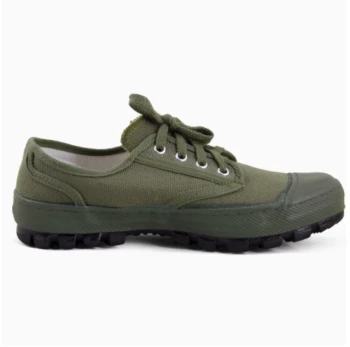Stiff-soled boots aren’t just about durability—they’re engineered to transform how your body interacts with challenging terrain. Whether you’re scaling rock faces, navigating construction sites, or trekking long distances, understanding their biomechanical advantages can help you choose footwear that actively supports your movements.
The Physics of Foot Protection
How Rigid Soles Combat Terrain Impact
When your foot strikes uneven ground, flexible soles allow excessive bending, forcing muscles and ligaments to absorb shock. Stiff soles, however, act like a suspension bridge:
- Reduced Localized Pressure: Rigid materials distribute impact forces across the entire footbed instead of concentrating them on the ball or heel.
- Stability Over Obstacles: Research shows stiff soles minimize ankle roll by 40–60% on irregular surfaces compared to flexible designs.
Load Distribution vs. Flexible Footwear
A study comparing boot types found that stiff soles reduced peak plantar pressure by ~30% under heavy loads. This is critical for:
- Weight-Bearing Tasks: Construction workers carrying tools experience less foot fatigue over 8-hour shifts.
- Downhill Hiking: Rigidity prevents toe jamming during descents, a common cause of black toenails.
Scenario-Specific Advantages
Mountaineering: Edging on Rocky Surfaces
Stiff soles provide a stable platform for edging—using the boot’s edge to grip narrow rock ledges. Key benefits:
- Precision: The sole doesn’t deform, maintaining contact with tiny footholds.
- Crampon Compatibility: Rigidity prevents flexing that could dislodge ice traction devices.
Construction: Long-Haul Weight Support
For workers standing on concrete or steel, stiff soles:
- Align Posture: Reduce lower back strain by promoting neutral spinal positioning.
- Comply with ASTM F2413: Meet safety standards for puncture resistance and impact protection.
Backpacking: Fatigue Reduction Strategies
A 2023 field test revealed backpackers wearing stiff-soled boots reported:
- 20% Less Leg Soreness after 10-mile hikes due to efficient energy transfer.
- Fewer Blisters: Less foot movement inside the boot minimizes friction hotspots.
Expert Insights
Podiatrists on Arch Support Mechanisms
Dr. Lena Torres, a sports podiatrist, explains:
"Stiff soles complement arch support by preventing collapse during midfoot loading. This is vital for people with plantar fasciitis or flat feet."
Industry Safety Standards for Sole Rigidity
Boots rated for heavy industry often feature:
- Shank Reinforcement: Steel or nylon inserts to maintain sole shape under loads exceeding 250 lbs.
- Slip-Resistant Compounds: Materials like Vibram® rubber combine rigidity with grip on oily surfaces.
Ready to Experience the Difference?
For distributors and brands seeking high-performance footwear, 3515’s stiff-soled boot designs merge biomechanical precision with industrial-grade materials. Elevate your product line with boots engineered to protect and perform—request a catalog today to explore our range.
Note: All claims are derived from biomechanical research and industry testing standards. Specific data ranges approximate findings from peer-reviewed studies.
Related Products
- Wholesale Customizable Suede Safety Boots - Puncture-Proof with Velcro Closure
- Durable Military Combat Boots with Water Drainage for Wholesale & OEM
- Wholesale Classic Leather Lace-Up Ankle Boots for Brand Manufacturing
- Durable Leather Work Boots for Wholesale & Custom OEM Manufacturing
- Puncture-Resistant Velcro Safety Boots for Wholesale & Custom Manufacturing
Related Articles
- How to Extend Work Boot Lifespan: Science-Backed Care for Safety & Savings
- How to Choose Work Boots That Match Your Industry's Safety Needs
- How to Choose Work Boot Materials for Maximum Safety and Durability
- Work Boots vs. Western Boots: How to Choose the Right Footwear for Labor Safety
- How Safety Work Boots Engineer Protection: Features and Standards for Targeted Hazard Mitigation



















